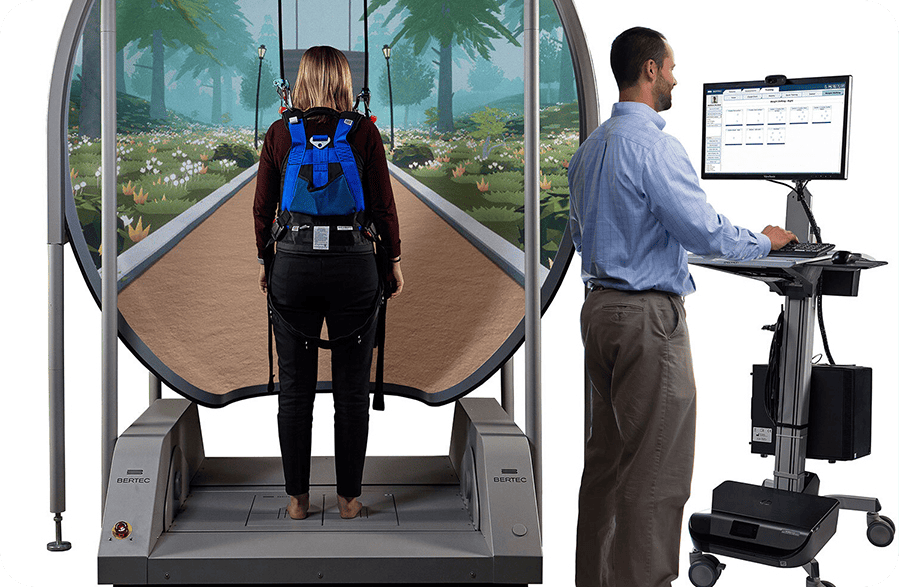Crossing the Healthcare Chasm with NeuroCom
Warren Schirtzinger was selected to help NeuroCom develop the best strategy for crossing the healthcare chasm and accelerating mainstream adoption of the company’s computerized posturography solution.

The Challenge
NeuroCom’s Computerized Dynamic Posturography (CDP) technology was first developed in the 1980s by Lew Nashner with initial support from NASA to evaluate the effects of space flight on vestibular function and balance control in astronauts.
Healthcare innovations like CDP are often unsuccessful because the developers and founders are not familiar with the concept of crossing the technology adoption chasm. This concept addresses the predictable slow-down in business that is caused by the differences between early adopters and risk-averse mainstream buyers.
Technology Adoption Strategy
After experiencing several years of increasing sales, NeuroCom was beginning to see a decline in their core business. In essence, the company was running out of early adopters to sell to, and needed help crossing the healthcare chasm.
- Adoption diagnostics. Assess the market to discover if NeuroCom was running out of early adopters to sell to, and if that was the cause of declining sales.
- A strategy for crossing the chasm. Identify the complete solution required by NeuroCom’s mainstream market segment. Determine which elements of a low-risk offering are available and which ones need to be provided by partners or allies.
- Identify the best sales channels. Identify and recruit familiar distribution channels to drive awareness and sell the complete solution.
The Solution
The standard prescription for crossing the technology adoption chasm is to select the best partners and allies, and create a complete solution-oriented product that meets the needs of a specific niche of target customers, thereby establishing a foothold in the mainstream market. However, that formula has been shown to fail if it is applied incorrectly or incompletely.
A team of consultants working at Regis McKenna Inc. (including High Tech Strategies founder Warren Schirtzinger) developed and implemented a comprehensive strategy that translated into mainstream market acceptance of NeuroCom’s CDP product.
The Results
From interesting new technology to mainstream healthcare solution
NeuroCom’s Computerized Dynamic Posturography (CDP) System became the industry gold standard in the assessment and treatment of patients with balance, dizziness and mobility problems. And NeuroCom’s CDP test protocols achieved a 30-year record of clinical use supported by peer-reviewed research.
Based on NeuroCom’s market leadership in the CDP industry, the company was acquired by Natus Medical Incorporated in 2008.
High Tech Strategies’ Contribution
- Target market characterization. We leveraged our ability to assess and prioritize various markets, and describe the characteristics of economic buyers within top growth opportunities.
- Segmentation – We successfully defined the group of customers who share similar needs and buying behaviors, and are more likely than others to adopt our client’s solution.
- Reachability of channels – Our ability to identify and prepare the best distribution channels to drive awareness and sell the complete solution was a critical success factor.
- Buying process – The client trusted our knowledge of the B2B buying process. This gave the company the confidence to embrace the six distinct customer activities required to successfully complete a sale.
The Impact
NeuroCom created the concept of Computerized Dynamic Posturography for systematically evaluating and training sensory and motor components of balance. And, for over 25 years, NeuroCom was the leading company worldwide advancing these concepts and devices.
Category Alignment and Growth
This engagement was the first documented use of the chasm concept as a method to increase the adoption rate of an innovative new technology-based product.
Soon after the chasm model was created and tested by Lee James and Warren Schirtzinger, it became the subject of a popular book.
- Mainstream market adoption. Rather than continuing to rely on early adopters as its primary source of revenue, NeuroCom was able achieve mainstream market adoption and sell products in a much larger market.
- Leadership positioning. The combination of lowest cost of ownership and highest amount of competitive differentiation provided NeuroCom with a sustainable leadership position in their category.
- Ecosystem alignment. The organizations, agencies and providers that form NeuroCom’s ecosystem became mutually aligned around a comprehensive vision, mission and top level strategy.

